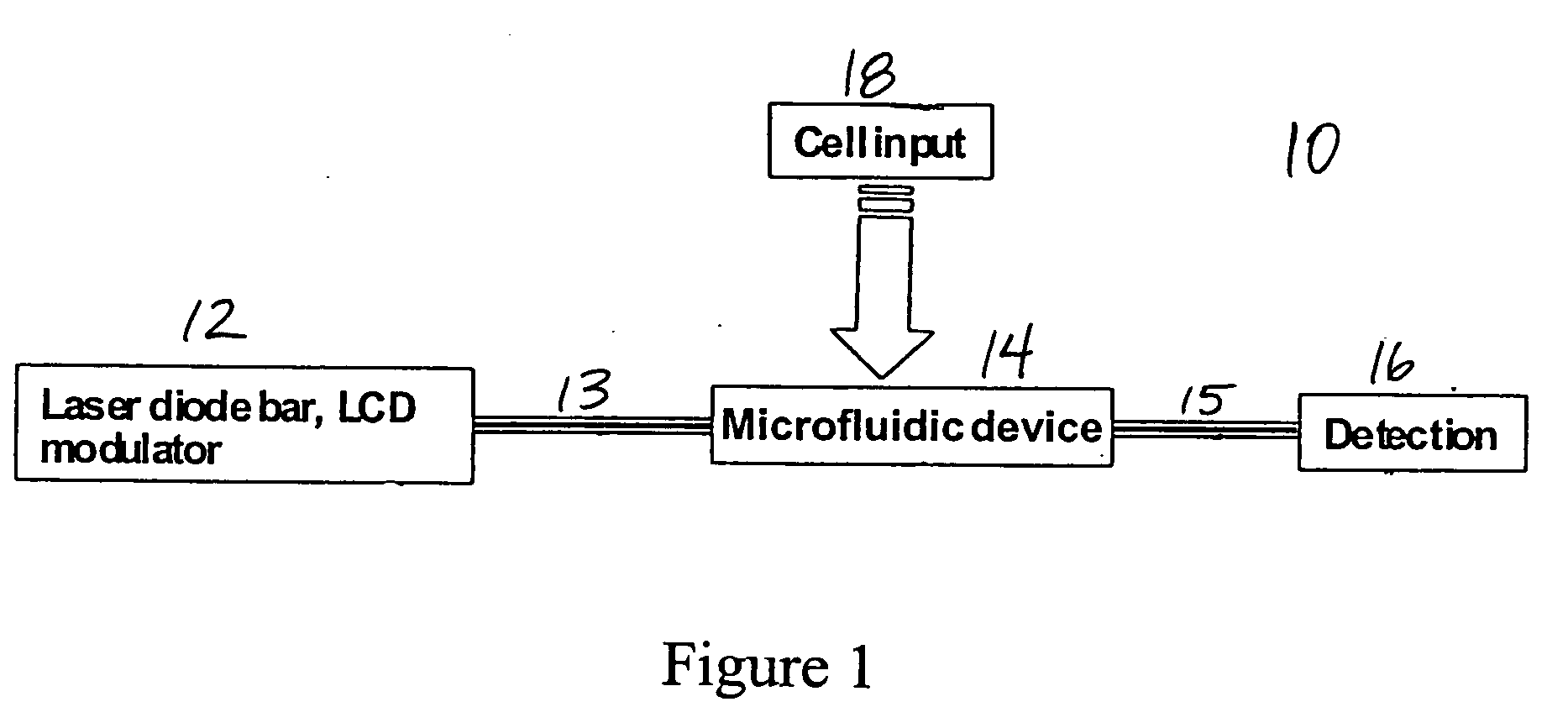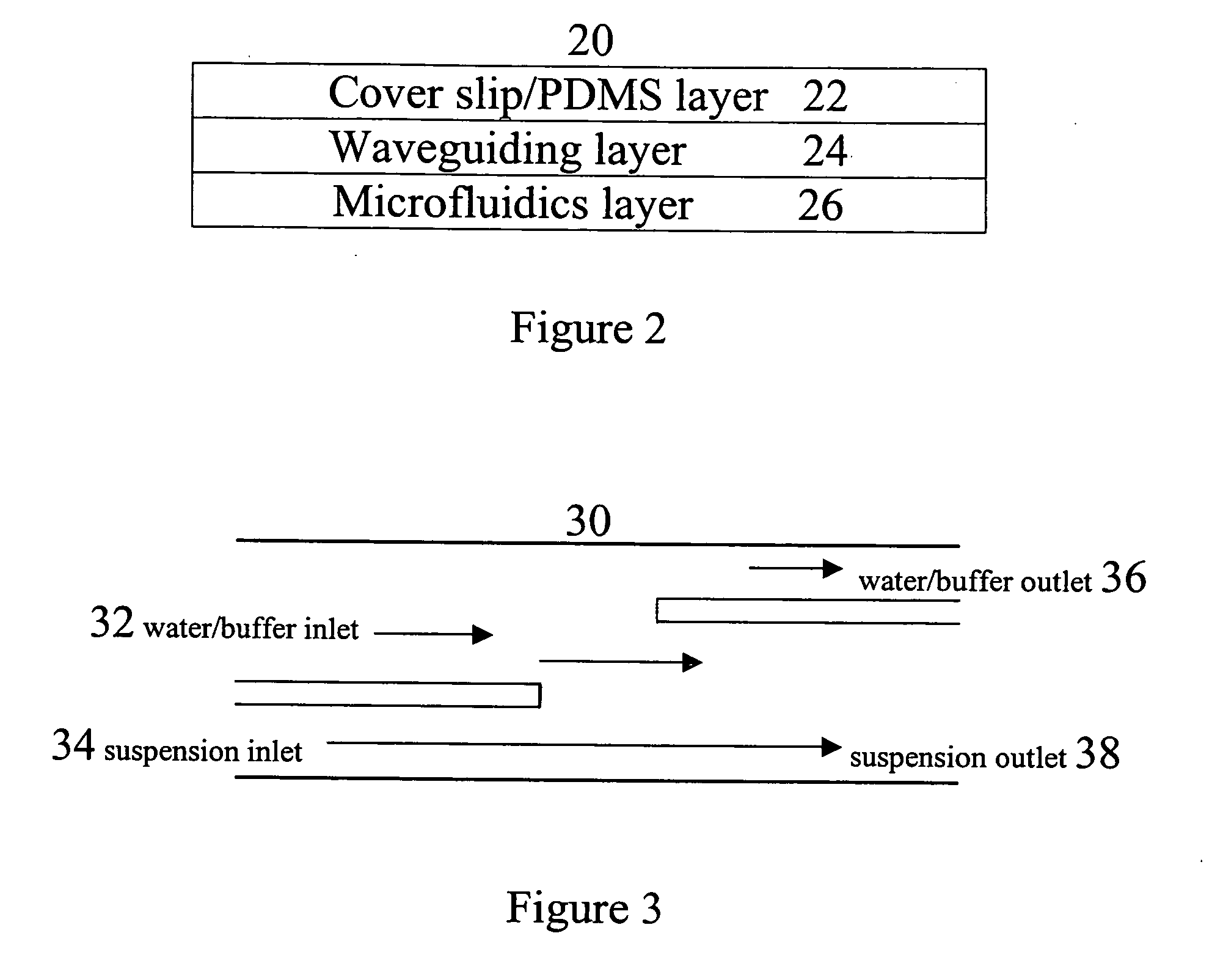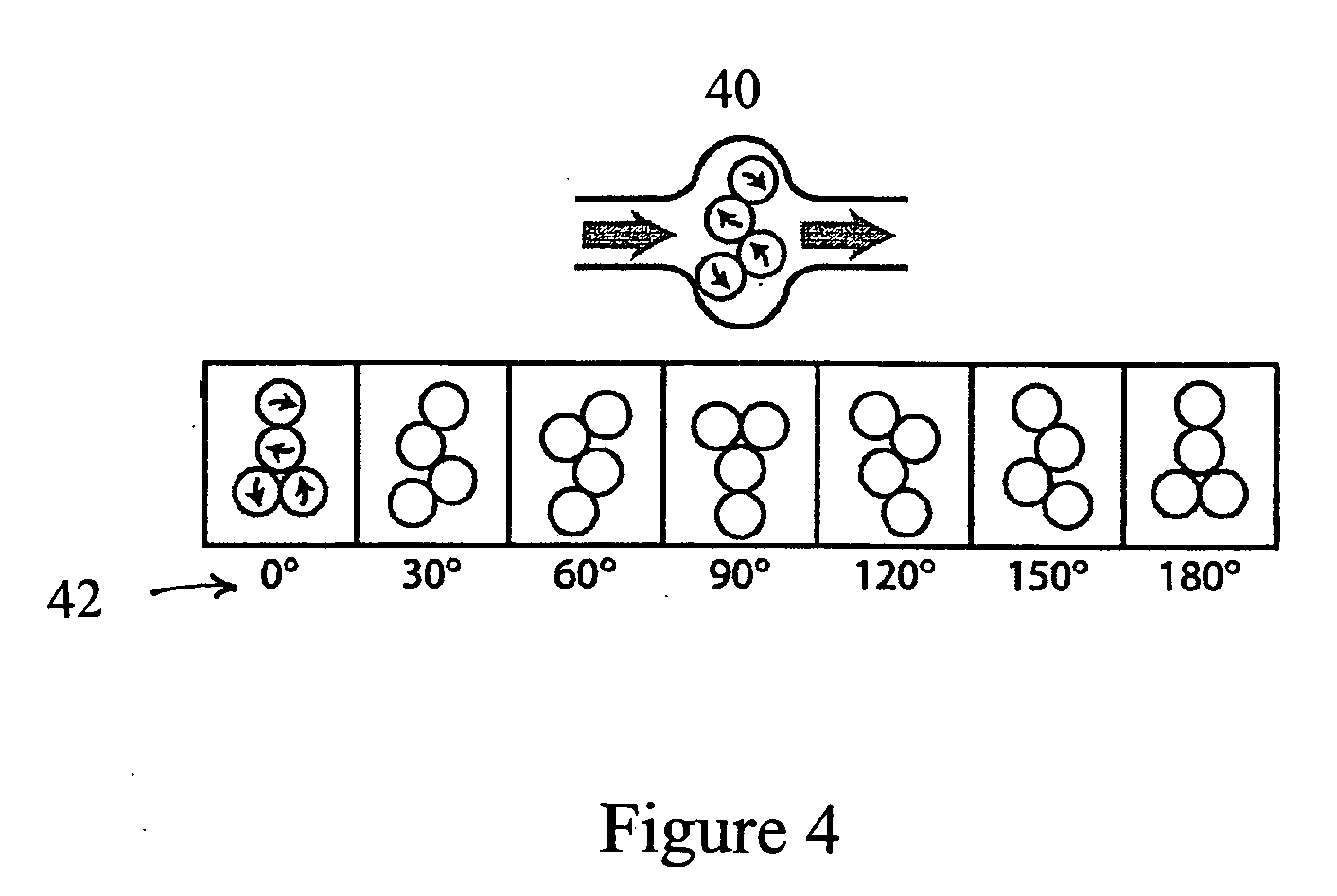Microfluidic systems incorporating integrated optical waveguides
- Summary
- Abstract
- Description
- Claims
- Application Information
AI Technical Summary
Benefits of technology
Problems solved by technology
Method used
Image
Examples
Embodiment Construction
[0025] The present invention is drawn to microfluidic systems that manipulate, isolate and sort particulate such as colloidal particles, cells, cell organelles and the like, in a portable micro-scale platform that allows for trapping, manipulation, isolation and sorting of the particulate, with convenient signal acquisition, interpretation, and real time feedback and to methods of manufacturing and using these systems.
[0026] Referring to FIG. 1, a basic system schematic of a microfluidic system 10 capable of cell sorting, and optical interrogation of individual cells, is illustrated. The microfluidic system 10 includes a light source 12, which, in one preferred embodiment, is a laser diode bar with an LCD modulator. The light source 12 may include a single, compact solid state laser diode, which, in one embodiment, is a one watt diode. However, as will be understood, the light source 12 may include other devices, including multiple laser diodes, having various power consumption. Th...
PUM
 Login to View More
Login to View More Abstract
Description
Claims
Application Information
 Login to View More
Login to View More - R&D
- Intellectual Property
- Life Sciences
- Materials
- Tech Scout
- Unparalleled Data Quality
- Higher Quality Content
- 60% Fewer Hallucinations
Browse by: Latest US Patents, China's latest patents, Technical Efficacy Thesaurus, Application Domain, Technology Topic, Popular Technical Reports.
© 2025 PatSnap. All rights reserved.Legal|Privacy policy|Modern Slavery Act Transparency Statement|Sitemap|About US| Contact US: help@patsnap.com



